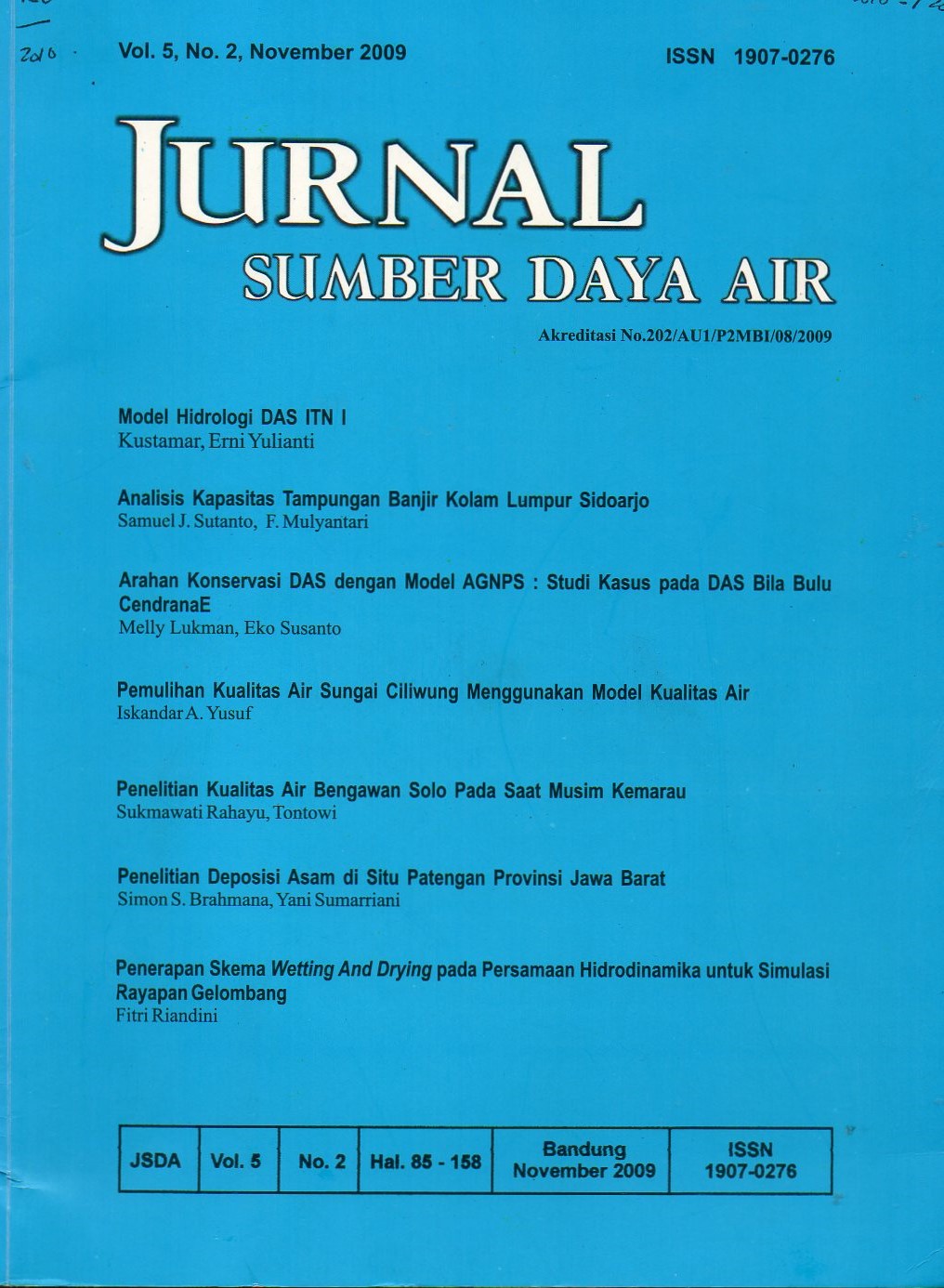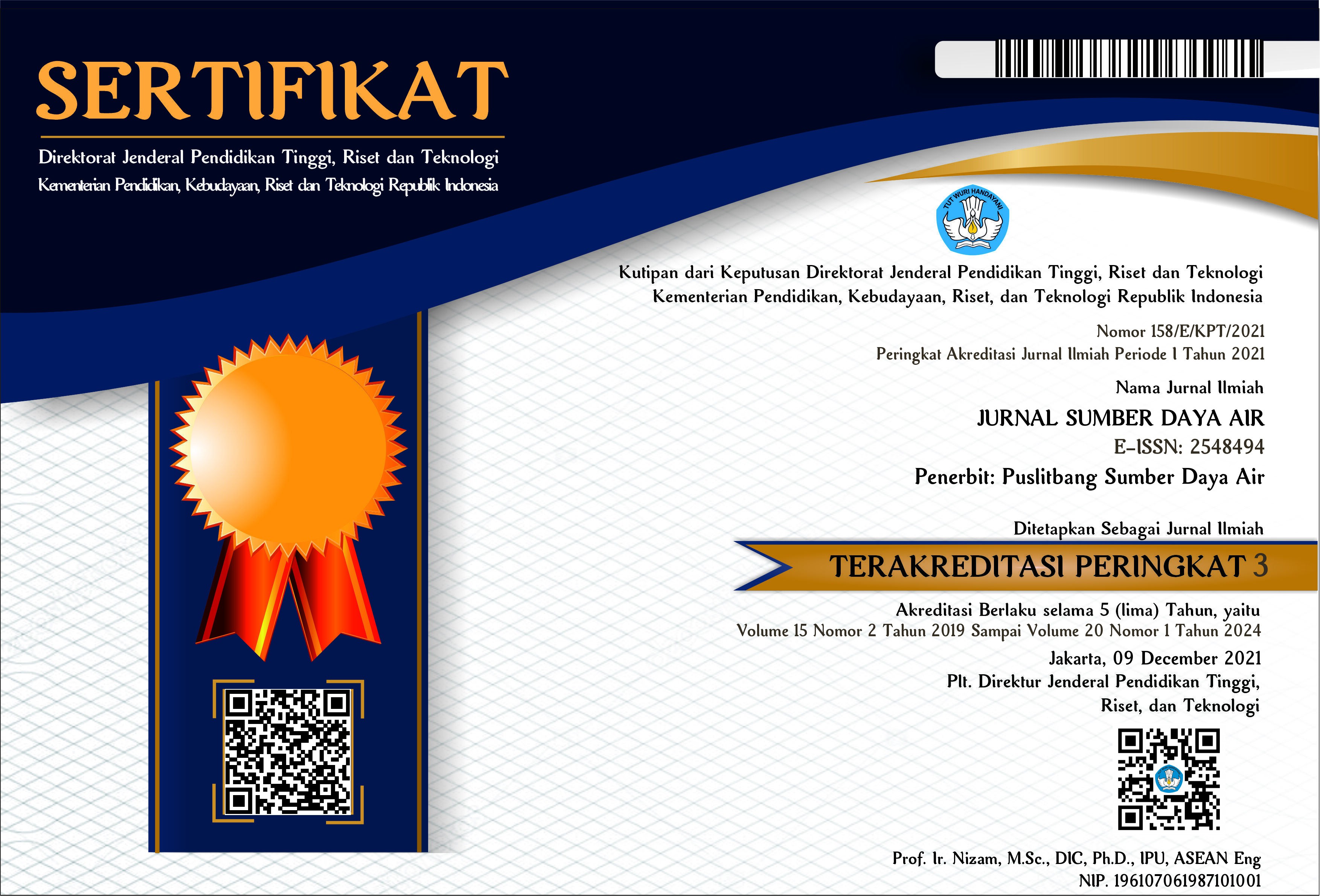PENERAPAN SKEMA WETTING AND DRYING PADA PERSAMAAN HIDRODINAMIKA UNTUK SIMULASI RAYAPAN GELOMBANG
DOI:
https://doi.org/10.32679/jsda.v5i2.474Kata Kunci:
wetting & drying, tsunami's run up.Abstrak
Wetting and drying (WAD) are common and important phenomena of the coastal ocean. They occur in
low-lying coastal zones and also in embayment and inlets. Strong winds and/or tides can cause flooding and
subsequent drying. In shallow water models, wetting and drying are determined by the total depth D = 0 for
'dry' and D>0 for 'wet'. The scheme defines 'dry' cells as region with a thin film fluid. The primitive
equations are solved in the thin film as well as in other regular wet cells. The scheme was applied to
hydrodynamics model to simulate tsunami's run up at Banda Aceh (Nanggroe Aceh Darussalam) and
Pangandaran (West Java). Simulation results show that run up height at Banda Aceh reach more than 5 m,
while at Pangandaran more than 3 m.
Referensi
Anonim, (2006), Identifikasi Kerusakan
Bangunan Muara-Pantai Paska Tsunami Laut
Selatan 17 Juli 2006, Laporan Kegiatan Balai
Pantai Puslitbang SDA, Hal 3.
Blumberg, A.F. and G.L. Mellor (1987): A
description of a three-dimensional
coastal ocean circulation model, Three -
dimensional ocean model, Norman S. Heaps
(ed), American Geophysical Union,
Washington DC, Hal 1-16.
HydroQual (2002), A Primer for ECOMSED
Version 1.3; User Manual, HydroQual Inc.,
New Jersey, Hal 7-11.
Oey, L.Y., (2005), A wetting and drying scheme
for POM, Ocean Modelling 9 pp 133-150,
ELSEVIER, Hal 2-4.
Oey, L.Y., (2006), An OGCM with movable
land-sea boundaries, Ocean Modelling 16 pp
-195, ELSEVIER, Hal 2-3.
Mellor, G.L., (2002), User's Guide for a Three
Dimensional Primitive Equation, Numerical
Ocean Model, Program in Atmospheric &
Oceanic Sciences, Princeton University
Unduhan
Diterbitkan
Cara Mengutip
Terbitan
Bagian
Lisensi
The Authors submitting a manuscript do so on the understanding that if accepted for publication, copyright of the article shall be assigned to Jurnal Sumber Daya Air and Pusat Penelitian dan Pengembangan Sumber Daya Air as publisher of the journal.Copyright encompasses exclusive rights to reproduce and deliver the article in all form and media, including reprints, photographs, microfilms and any other similar reproductions, as well as translations. The reproduction of any part of this journal, its storage in databases and its transmission by any form or media, such as electronic, electrostatic and mechanical copies, photocopies, recordings, magnetic media, etc. , will be allowed only with a written permission from Jurnal Sumber Daya Air and Pusat Penelitian dan Pengembangan Sumber Daya Air.
Jurnal Sumber Daya Air and Pusat Penelitian dan Pengembangan Sumber Daya Air, the Editors and the Advisory International Editorial Board make every effort to ensure that no wrong or misleading data, opinions or statements be published in the journal.




















